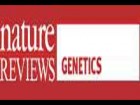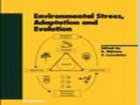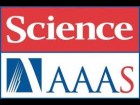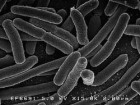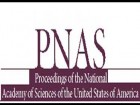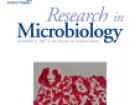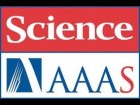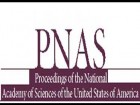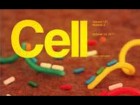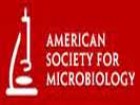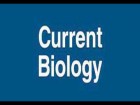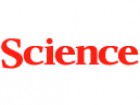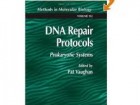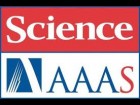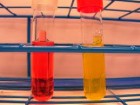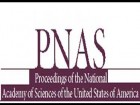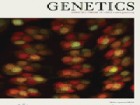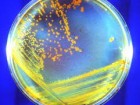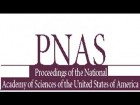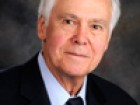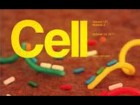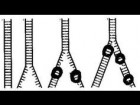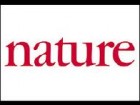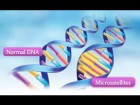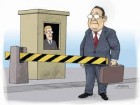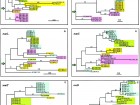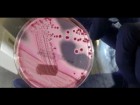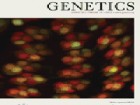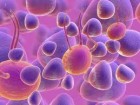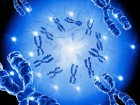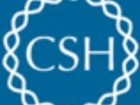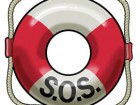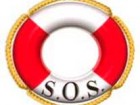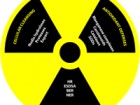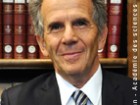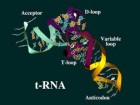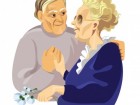... This approach will produce algorithms that are based on current understanding of molecular and evolutionary biology and could solve previously unimaginable or intractable computational and biological problems.
Besides an immediate cellular adaptation to stress, organisms can resist such challenges through changes in their genetic material. These changes can be due to mutation or acquisition of pre-evolved functions via horizontal transfer. In this chapter we will review evidence from bacterial genetics that suggests that the frequency of such events can increase in response to stress by activating mutagenic response (e.g. the SOS response) and by inhibiting antimutagenic activities (e.g. mismatch repair system, MRS).
... These results demonstrate the establishment of an incipient genetic barrier between formerly identical lines, and they support a model in which the mismatch repair system can influence speciation dynamics through its simultaneous effects on mutation and recombination.
A genetic analysis of interspecies recombination in Escherichia coli between the linear Hfr DNA from Salmonella typhimurium and the circular recipient chromosome reveals some fundamental aspects of recombination between related DNA sequences...
These results demonstrate the establishment of an incipient genetic barrier between formerly identical lines, and they support a model in which the mismatch repair system can influence speciation dynamics through its simultaneous effects on mutation and recombination.
Book Supramolecular Structure and Function 8, by Greta Pifat-Mrzljak - you can read it here on-line. So you can read a chapter: Molecular and Cellular Levels of Biological Evolution by Miroslav Radman.
Dehydration or desiccation is one of the most frequent and severe challenges to living cells1. The bacterium Deinococcus radiodurans is the best known extremophile among the few organisms that can survive extremely high exposures to desiccation and ionizing radiation, which shatter its genome into hundreds of short DNA fragments
... Two classes of genes are known to accelerate mutation and/or recombination rates in bacterial populations: stress-inducible wild-type genes, usually part of the SOS regulon, and genes whose functional loss, or downregulation, increases the rate of genetic variability (mutator and/or hyper-rec mutants). Keywords
We have shown that bacterial mutation rates change during the experimental colonization of the mouse gut. A high mutation rate was initially beneficial because it allowed faster adaptation, but this benefit disappeared once adaptation was achieved.
We present and test a model for a defensive strategy based on the methylation and subsequent mutation of CpG dinucleotides in those DNA duplications that create uninterrupted homologous sequences longer than about 0.3 kilobases. The model helps to explain both the diversity of CpG frequencies in different genes and the persistence of gene fragmentation into exons and introns.
The method and the system of the invention comprise selective detection of the DNA transferred from one cell to another, while substantially always being blind to the DNA from either donor or recipient cell
Bacterial mismatch repair (MMR) deficient mutants, exhibiting high mutation and homeologous recombination rates, are frequently found in natural populations. Therefore, we have explored the possibility that MMR deficiency emerging in nature has left some “imprint” in the sequence of bacterial genomes.
We show in a gnotobiotic mouse model that, in addition to direct selection of antibiotic-resistant bacteria, some antibiotic treatments also select for mutator alleles. Because of these mutator alleles\' high mutation rates, the initial treatment failure increases the probability of failures in subsequent treatments with other drugs.
Cancer predisposition in hereditary non-polyposis colon cancer (HNPCC) is caused by defects in DNA mismatch repair1 (MMR). Mismatch recognition is attributed to two heterodimeric protein complexes: MutSalpha, a dimer of MutS homologues MSH2 and MSH6; and MutSbeta, a dimer of MSH2 and MSH3. These complexes have specific and redundant mismatch recognition capacity.
We describe a method for detecting the majority of genomic mutations emerging in living cells, independently of their potential phenotype. The distribution of emerging mutations per cell is roughly Poisson distributed, suggesting that all the cells in the population have roughly the same mutation rate.
To investigate the role of the presumed DNA mismatch repair (MMR) gene Msh2 in genome stability and tumorigenesis, we have generated cells and mice that are deficient for the gene. Msh2-deficient cells have lost mismatch binding and have acquired microsatellite instability, a mutator phenotype, and tolerance to methylating agents...
The evolutionary significance of stress-induced mutagenesiswas evaluated by studying mutagenesis in aging colonies (MAC)of Escherichia coli natural isolates. A large fraction of isolatesexhibited a strong MAC, and the high MAC variability reflectedthe diversity of selective pressures in ecological niches.
Genomic sequence data provide evidence for a common origin of life and for its evolution by genetic variation via mutation and recombination. This paper discusses the fundamental dialectic paradigm of evolution-stability versus variability-at the crossroads of molecular genetics, population genetics, ecology, and the emerging science of experimental evolution.
Two modes of mismatch repair are known to operate in bacteria: long-patch mismatch repair and very short patch mismatch repair. Very short patch mismatch repair systems act on a specific mismatch by conserving only one base pair. Therefore, when very short patch mismatch repair acts on heteroduplex ...
A high incidence of mutators was observed not only among emerging pathogens, but also among classical pathogenic and commensal strains, such as those isolated from feces of healthy Dogons for whom there is no record of antibiotic treatment (8). This suggests that all bacterial populations have recently experienced adaptive evolution...
The efficiency of homologous genetic recombination depends on the length and degree of DNA sequence identity shared by the two parental molecules, and on the cellular enzymatic systems involved in genetic recombination and its editing. Crosses between different bacterial species show that recombination frequency decreases exponentially with increasing sequence divergence
Cell death caused by arrested replication of damaged or structurally altered DNA can be avoided in prokaryotic and eukaryotic cells by multiple DNA polymerases that are specialized to bypass DNA damage. Some of these polymerases perform such translesion DNA synthesis of specific types of damage with high genetic fidelity. However,...
... The methyl-directed (mut H,L,S dependent) mismatch repair system appears to control the fidelity of homologous recombination; inactivating one of the Mut functions increases the interspecies recombination at least by 10(3)-fold...
Molecular keys to speciation: DNA polymorphism and the control of genetic exchange in enterobacteria
... The extent of genetic isolation between enterobacteria is a simple mathematical function of DNA sequence divergence. The function does not depend on hybrid DNA stability, but rather on the number of blocks of sequences identical in the two mating partners and sufficiently large to allow the initiation of recombination. Further, there is no obvious discontinuity in the function that could be used to define a level of divergence for distinguishing species.
To get more insight into the control of homologous recombination between diverged DNA by the Mut proteins of the long-patch mismatch repair system, we have studied interspecies Escherichia coli/Salmonella typhimurium recombination. Knowing that the same recombination pathway (RecABCD) is responsible for intraspecies and interspecies recombination, we have now studied...
Deinococcus radiodurans is one of the most radiation-resistant organisms known. It can repair hundreds of radiation-induced double-strand DNA breaks without loss of viability. Genome reassembly in heavily irradiated D. radiodurans is considered to be an error-free process since no genome rearrangements were detected after post-irradiation repair. Here, we describe for the first time conditions that frequently cause erroneous chromosomal assemblies.
Mismatch repair proteins MutS and MutL inhibit RecA-catalyzed strand transfer between diverged DNAs.
We show that MutS abolishes RecA-catalyzed strand transfer between fd and M13 bacteriophage DNAs, which vary by 3% at the nucleotide level, but is without effect on M13-M13 or fd-fd exchange. Although MutL alone has no effect on M13-fd heteroduplex formation....
...We examined the role of the general mismatch repair system of Escherichia coli because previous work has shown that the mismatch repair pathway functions as a barrier to interspecies recombination between E. coli and Salmonella typhimurium...
The ability of related DNAs to undergo recombination decreases with increased sequence divergence. Mismatch repair has been proposed to be a key factor in preventing homeologous recombination; however, the contribution of mismatch repair is not universal
We conclude that mismatch repair proteins serve as general controllers of the fidelity of genetic inheritance, acting to suppress chromosomal rearrangements as well as point mutations.
Analysis of interspecies matings between S. typhimurium and E. coli indicates that the genetic barrier that separates these (and perhaps many other) related species is primarily recombinational. The structural component
... This finding has implications for speciation, for regulating recombination between diverged repeated sequences, and for hitherto difficult interspecies hybridizations.
A hereditary form of colon cancer, hereditary non-polyposis colon cancer (HNPCC), is characterized by high instability of short repeated sequences known as microsatellites. Because the genes controlling microsatellite stability were known in bacteria and yeast, as was their evolutionary conservation, the search for human genes responsible for HNPCC....
Using an epigenetic indicator of SOS induction, we showed that a strong SOS response occurring in a subpopulation of mated mismatch repair-deficient cells totally abolishes genetic barriers between these two genera.
Deinococcus radiodurans is among a small number of bacterial species that are extremely resistant to ionizing radiation, UV light, toxic chemicals, and desiccation. We measured proteome oxidation (i.e., protein carbonylation, PC) in D. radiodurans as well as in standard and evolved resistant strains of Escherichia coli exposed to ionizing radiation or UVC light and found a consistent correlation with cell killing. The unique quantitative relationship between incurred PC and cell death holds over the entire range of killing for all tested bacteria and for both lethal agents, meaning that both bacterial species are equally sensitive to PC.
The presence of repeated DNA sequences is a genomic liability, because interrepeat recombination can result in chromosomal rearrangements. The mismatch repair system prevents recombination between nonidentical repeats, but the mechanism of antirecombination has not been established. Although the MutS protein binds to base...
Here, we explore possible hallmarks of prokaryotic desiccation tolerance in their proteomes. The content of unstructured, low complexity (LC) regions was analyzed in a total of 460 bacterial and archaeal proteomes. It appears that species endowed with proteomes abundant in unstructured hydrophilic LC regions are desiccation-tolerant or sporulating bacteria, halophilic archaea and bacteria, or host-associated species.
Excessive recombination between repeated, interspersed, and diverged DNA sequences is a potential source of genomic instability. We have investigated the possibility that a mechanism exists to suppress genetic exchange between these quasi-homologous (homeologous) sequences.
A genetic analysis of interspecies recombination in Escherichia coli between the linear Hfr DNA from Salmonella typhimurium and the circular recipient chromosome reveals some fundamental aspects of recombination between related DNA sequences.
...Given that oxidative stress caused by the accumulation of reactive oxygen species is associated with aging and cancer, a comprehensive outlook on D. radiodurans strategies of combating oxidative stress may open new avenues for antiaging and anticancer treatments. The study of the antioxidation protection in D. radiodurans is therefore of considerable potential interest for medicine and public health.
Mismatch repair (MMR) is the ubiquitous, most important and versatile DNA editing system that corrects copy errors arising during DNA replication, prevents chromosomal rearrangements and maintains genetic barriers between related species. This paper presents MMR discovery: experiments carried out back in 1976.
DNA Repair Systems and Bacterial Evolution - Book Biological responses to DNA damage; page 11 - 19.
\'SOS repair\' was the descriptive term coined by Miroslav Radman in 1974 to characterize the cellular stress response caused by exposure to ultraviolet (UV) radiation. More than 40 genes, regulated by the LexA repressor protein, are induced in response to DNA damage as part of the SOS regulon in Escherichia coli. When chromosomes are damaged, persisting regions of single-stranded DNA allow the assembly of activated RecA nucleoprotein filaments called RecA...
A major discovery can often be recognized by the need to coin a new word (e.g., atom, radioactivity, antibiotic, apoptosis, etc). If the discovered entity or phenomenon does not have its cognate word in our vocabulary, it is surely a breakthrough. Coining the word SOS response (SOS system, SOS replication, SOS repair) to describe coordinated multiple inducible cellular responses to DNA damage resulting in induced mutagenesis and cell survival, was such a privilege (Radman 1974). This is a personal historical account of the intellectual circumstances that led to the birth of SOS hypothesis
Deinococcus radiodurans’ extreme resistance to ionizing radiation, desiccation, and DNA-damaging chemicals involves a robust DNA repair that reas- sembles its shattered genome...
Undirected mismatch repair initiated by the incorporation of the base analog 2-aminopurine kills DNA-methylation-deficient Escherichia coli dam cells by DNA double-strand breakage. Subsequently, the chromosomal DNA is totally degraded, resulting in DNA-free cells.
Deinococcus n\'utilise aucun des six mécanismes de réparation d\'ADN connus chez les animaux et les microorganismes, et il n\'était pas évident d\'en trouver un autre. En fait, Deinococcus met à profit les multiples copies de son génome
Book. chapter 14: Horisontal Transfer of Mismatch Repair - Genes and the Variable Speed of Bacterial Evolution , in the book HORISOLTAL GENE TRASFER edited by Michael Syvanen & Clarence I. Kado Ivan Matic, Olivier Tenaillon, Gullieme Lecointre, Pierre Darlu, Miroslav Radman, François Taddei, Erick Denamur
Our genome has evolved to perpetuate itself through the maintenance of the species via an uninterrupted chain of reproductive somas. Accordingly, evolution is not concerned with diseases occurring after the soma’s reproductive stage...
Errors during gene expression from DNA to proteins via transcription and translation may be deleterious for the functional maintenance of cells. In this paper, extensive genetic studies of the misreading of a GA repeat introduced into the lacZ gene of Escherichia coli indicate...
Errors and infidelity, even wastefulness, can cause individual failure, but they are also a source of innovation and robustness, ensuring the perpetuation of life.

